Created by Ai Contributing Writer
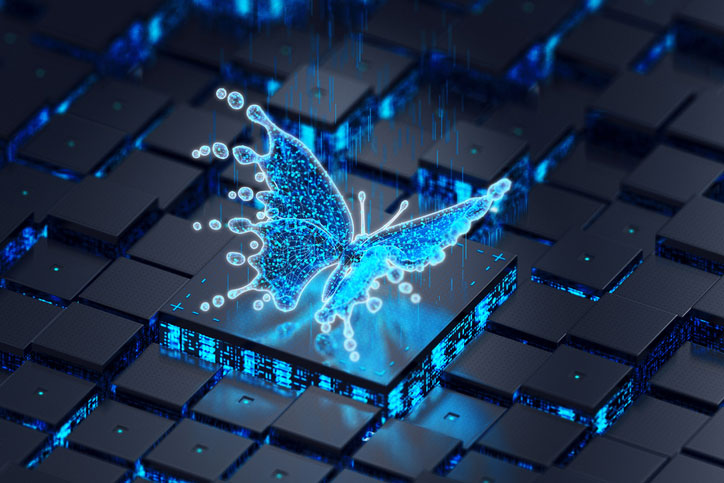
The release of ChatGPT in November of 2022 created a groundswell of interest in AI around the world. Predictably, amusing, entertaining, and surprising conversations with the machine were posted across social and traditional media. It seemed like everyone had created an account and had some fun talking with the machine.
What was less predictable was the closure of submissions of new stories to the science fiction and fantasy magazine Clarkesworld that happened just a few months later in February of 2023.
Not all those new ChatGPT subscriptions were just being used for fun. Editor Neil Clarke reported that a surge in AI-generated stories threatened to outpace traditional submissions. Expecting the total to double by month-end, the editorial staff simply couldn’t keep up.
The submissions were largely the result of the entry of folks like Brett Schickler, a salesman from Rochester, New York. A man with a dream of becoming a published author, Schickler hadn’t had the time or resources to write… until ChatGPT came along.
Using AI, he was able to realize his dream of telling a story and publishing it on Amazon Kindle with only a few hours of effort. A once dormant creative itch was scratched; and a 30 page children’s book titled “The Wise Little Squirrel: A Tale of Saving and Investing” entered the pantheon of available titles in Amazon’s online store.
It joined thousands of other creative works, of literature, music, and imagery, created mainly with artificial intelligence. And it showed a path forward for careers in creative fields driven by AI.
Creative Professions May Be the Tip of the Spear in Practical Applications of Artificial Intelligence Today
Although they are backed by highly complex science and intricate algorithms, most generative AI tools today are being used far more widely in the arts than in computer science.
One of the most surprising things about the current surge of interest and applications in AI is that most of them have not been technical.
A Generative Pre-Trained Transformer is a tool of language. Rooted in millions of texts spanning generations, ChatGPT isn’t the coldly calculating, utterly rational AI of science fiction: it’s a wordsmith trained on Shakespeare, Vonnegut, and King.
And while computer vision processing AI is finding plenty of applications in self-driving cars and factory robotics, it’s also popped up as a surprising presence in the visual arts. DALL-E and Midjourney are creating a buzz as artists either build on them or create new imagery as interpreted by the layers of deep neural networks they incorporate.
Debate Rages on the Impact of AI in the Creative Arts
 It was a shock to both Jason Allen and the other competitors in the 2023 Colorado State Fair Digitally Manipulated Photography category when he won first prize. Allen’s creation, titled “Théâtre D’opéra Spatial” was a gorgeous and fantastical image resembling an oil painting but filled with lush detail. It was also produced down to the last pixel by the AI tool Midjourney.
It was a shock to both Jason Allen and the other competitors in the 2023 Colorado State Fair Digitally Manipulated Photography category when he won first prize. Allen’s creation, titled “Théâtre D’opéra Spatial” was a gorgeous and fantastical image resembling an oil painting but filled with lush detail. It was also produced down to the last pixel by the AI tool Midjourney.
Both the image and its success at the fair started a firestorm of debate. Did Allen, who had only typed in a brief description of his vision, had no arts background or training, and had never entered an art competition before, deserve any credit for the image? If not Allen, who? Was it appropriate for machine-generated art to compete against machine-manipulated images? Photoshop and other tools had been changing art piecemeal for decades before Midjourney came on the scene… was there a difference?
Among many other examples, the use of AI in traditional forms of human artistry has been stoking fiery arguments in the creative community.
Two Schools of Thought Are Emerging on AI in the Arts
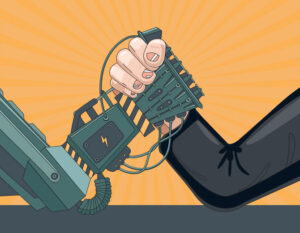 Two camps emerged from the controversy and have largely dominated the discussion since.
Two camps emerged from the controversy and have largely dominated the discussion since.
The first asserts that AI is merely another tool, a high-tech paintbrush or musical instrument that allows the artist new means of expression. In this view, AI is an enhancement to the long tradition of imagination and creativity. It can allow new possibilities and creations that otherwise would be impossible.
The second group views AI as the death of human expression. With artificial intelligence creating stories, songs, and paintings, human artists will be crowded out of an already shrinking market. AI actors will replace real actors. Photographers will no longer be needed since AI can compose and generate perfect pictures for any scene.
Beyond the losses in the job market, they fear that something vital will be missing. Culture, robbed of human creativity, will wither. Artists will face disrespect. Art itself, without humanity, will lose all meaning.
Who is Right About AI in Creative Arts?
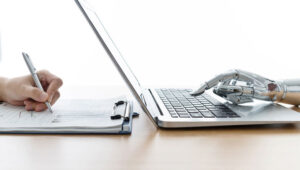 You can find evidence to support either position. For “Théâtre D’opéra Spatial,” for instance, Allen claims to have spent some 80 hours developing and honing the style of the image through text prompts, creating some 900 versions along the way. He ultimately finished it up in Photoshop, adding key details directly.
You can find evidence to support either position. For “Théâtre D’opéra Spatial,” for instance, Allen claims to have spent some 80 hours developing and honing the style of the image through text prompts, creating some 900 versions along the way. He ultimately finished it up in Photoshop, adding key details directly.
That’s a solid commitment of human thought and creativity, even if a machine was ultimately charged with delivering the images imagined.
On the other hand, critics point out that the art of Midjourney is not simply created from whole cloth in the mind of the machine. Generative AI tools are themselves developed by inhaling millions of creative works painted directly by humans. They produce their own imagery through statistical analysis and parroting of the styles and layout they have seen.
That original spark doesn’t come from the machine, but is a kind of mimicry, critics say. In fact, it may be a kind of cheating, if there is cheating in art.
A machine can view, absorb, and analyze far more material to a far more detailed degree than any human art student.
Yet if the objective of artificial intelligence is to create similar learning, reasoning, and problem solving in machines as in humans, it’s hard to argue that generative processes aren’t doing that. Every accomplished human artist is influenced by everything they have seen and learned. Most probably have viewed and analyzed the same imagery that has gone into Midjourney as a part of their own education.
Is there something special that only comes from the human spirit that infuses true art? If so, what? And if not, what keeps the machine from learning and interpreting existing works in the same way?
From Any Perspective, the Use of AI in the Arts is a Game Changer for Creative Careers
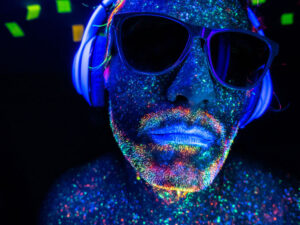 For any artist, the arguments around the soul of the machine may be beside the point. The reality is that the tools exist and are being used. So the real question is how to adapt.
For any artist, the arguments around the soul of the machine may be beside the point. The reality is that the tools exist and are being used. So the real question is how to adapt.
Plenty of creative professionals have already taken the plunge. Authors writing popular genre series to self-publish on Amazon have used GPT tools to send their output soaring. The Verge reports that one author now cranks out a new book every 49 days using AI tools. More musicians, writers, painters, and others are finding ways to adjust to AI even now.
As artists do, those who are open to the new technologies are coming at them creatively. In general, you can find two likely paths that creative careers may follow through the AI age.
Artificial Intelligence May be The Tool That Opens Up a Career in the Arts for Millions
 As Brett Schickler and Jason Allen found, it’s perfectly possible to adopt AI in service of a creative career that follows the same footsteps as any artist or writer. Using AI to mediate and enhance ideas for stories, songs, images, or any work of art still results in a product that can find an audience.
As Brett Schickler and Jason Allen found, it’s perfectly possible to adopt AI in service of a creative career that follows the same footsteps as any artist or writer. Using AI to mediate and enhance ideas for stories, songs, images, or any work of art still results in a product that can find an audience.
Prompt engineering opens this kind of career path up to anyone who didn’t have the time or talent to develop those ideas the old-fashioned way. While that doesn’t make the product any less appealing, it does give hope to millions who have in their hearts the seeds of great works, but whose fingers have never quite mastered the brush strokes to realize them.
Of course, like any field that suddenly finds itself flooded with new works, this presents problems of pricing. It’s unlikely that many newly minted AI authors or artists will be leaving their day jobs to make a career of their dreams. The financial realities of a universe of easy publishing mean the pie will be sliced more thinly than ever.
But that’s not a new reality. According to a 2018 survey by Creative Independent, the median income for visual artists was only $20,000 to $30,000 per year. About a third rely on family support or inheritances; forty percent had another job as their primary source of income.
That’s well before any impact from AI hit the field. Being a creative professional has always been a part-time effort for most. Artificial intelligence may grow the ranks, but it won’t change that equation.
The Development of Artificial Intelligence Itself Will Open Up New Jobs for Creative Professionals
Anyone who has ever used Emacs understands that creating tools for humans ought not be left to programmers. So the growth of AI across industries is likely to open vast new opportunities for liberal arts graduates and their creativity.
Needs for creative professionals in AI will come at every level of skill. If you have crossover familiarity with both technical and creative concepts, so much the better.
Those will be the leads designing beautiful user interfaces for AI systems, or writing the help manual pages people will turn to when they get stuck. Just as the IT industry already employs thousands of artists and writers, so too will the AI industry.
There will also be increasing demand for anyone who can help build AI-driven toolsets specifically for art and literature.
Going back to the 80 hours and 900 versions of “Théâtre D’opéra Spatial” that Jason Allen generated, everyone agrees that those numbers represent a huge problem:
For those opposed to AI, it’s far too fast. It shows too little commitment and too little human contribution to make great art.
For those who support AI, however, it’s far too slow. A better tool, a more effective machine intelligence, should allow artists to realize their vision in much less time and effort.
So creative professionals who can work with coders to help produce better systems will definitely be in demand. Helping AI engineers craft systems that are faster at reading the intent and expressing the vision of artists is going to be a key role in AI development.
Wanted: Piano Teacher for an AI. Remote Work Preferred.
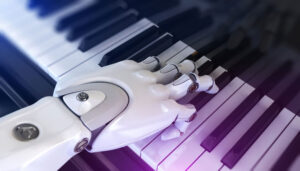 Finally, there will be an increasing need for talented and experienced artists who can work directly with AI and train them to become better at creative roles. Like human intelligence, artificial intelligence isn’t automatically good at creativity. It has to be taught.
Finally, there will be an increasing need for talented and experienced artists who can work directly with AI and train them to become better at creative roles. Like human intelligence, artificial intelligence isn’t automatically good at creativity. It has to be taught.
Generative toolsets today rely heavily on machine learning. That’s a process of feeding large amounts of data to an algorithm that analyzes and learns from the data to create new works with statistical similarities to the training data.
While it’s possible for the machine to go through this process entirely on its own, more effective methods call for human supervision. Artists who can label training data to identify the noteworthy qualities within it can kick-start the training process. In other cases, they may assist with reinforcement learning techniques. Grading the output of the machine delivers feedback that can lead to better results.
New Kinds of Creative Work Will Emerge Between Artist and Machine
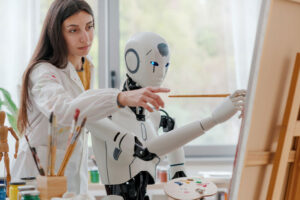 There are also likely to be specialty positions that open up to mediate between AI and human creators. In the same way that musicians rely on audio engineers and sound mixers to help them lay down the version of songs they have imagined, the future will probably see artists relying on AI specialists to craft prompts or tune models to achieve exactly the results they are looking for.
There are also likely to be specialty positions that open up to mediate between AI and human creators. In the same way that musicians rely on audio engineers and sound mixers to help them lay down the version of songs they have imagined, the future will probably see artists relying on AI specialists to craft prompts or tune models to achieve exactly the results they are looking for.
And creative experts in AI are also going to be important in arts education. For anyone coming into creative fields today, familiarity with AI tools will be as indispensable as knowing how to type or how to string a guitar. The efficiency they bring to the table isn’t free. Just like learning to play an instrument or run a word processor, artists will need to get familiar and comfortable with AI assistance. So demand for teachers and tutors who know the tools is likely to boom.
AI will only enhance, rather than eliminate, the need for human creativity.
In the same way that the arts world only added new roles after the invention of the camera or the synthesizer or drum machines, careers in the arts will shift and expand. It may be impossible to see today what all those new roles may be. But that’s the beauty of work in creative fields: the most elemental role is of invention. Be the change you wish to see in the new AI-powered world of arts.
